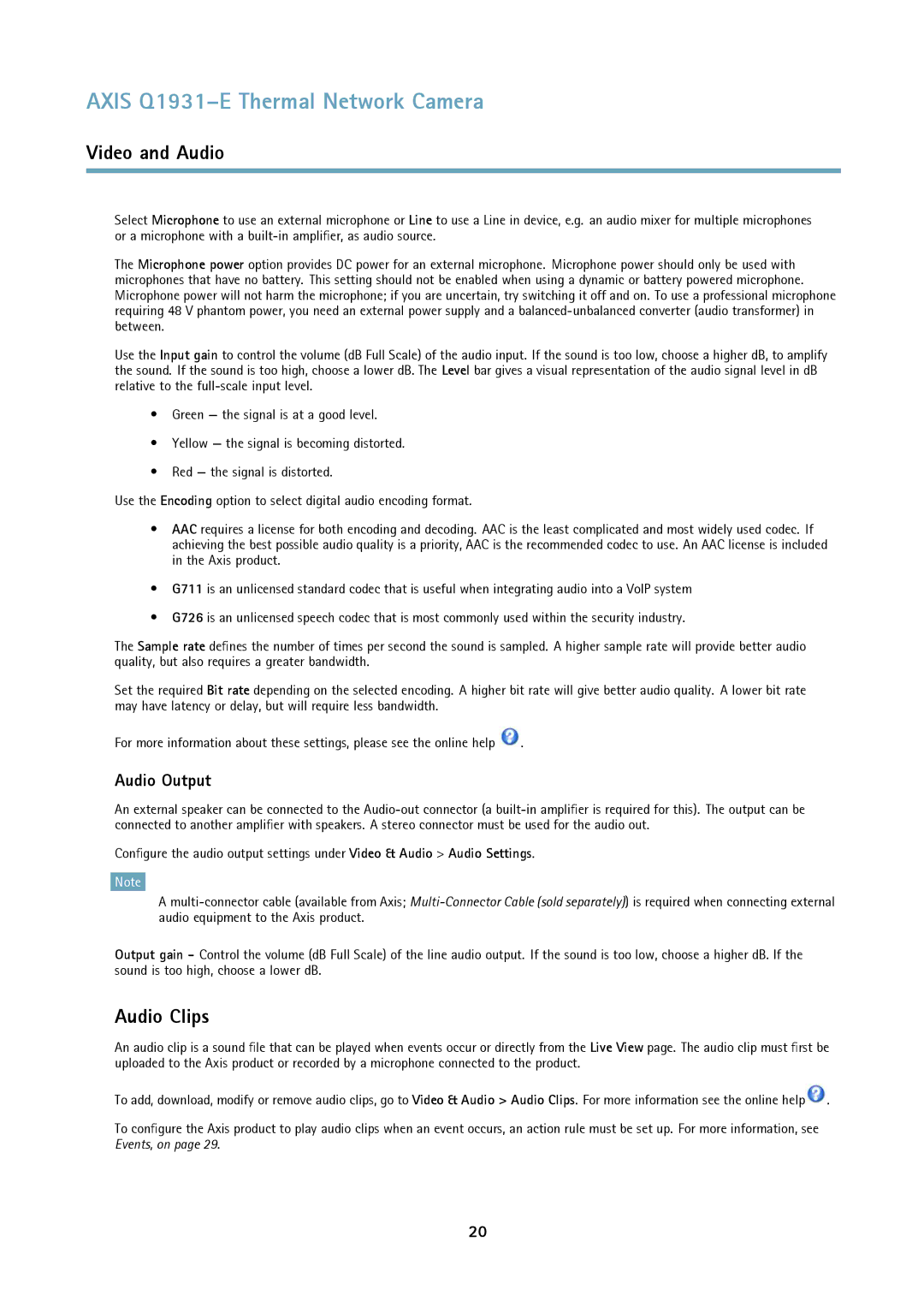
AXIS Q1931–E Thermal Network Camera
Video and Audio
Select Microphone to use an external microphone or Line to use a Line in device, e.g. an audio mixer for multiple microphones or a microphone with a
The Microphone power option provides DC power for an external microphone. Microphone power should only be used with microphones that have no battery. This setting should not be enabled when using a dynamic or battery powered microphone. Microphone power will not harm the microphone; if you are uncertain, try switching it off and on. To use a professional microphone requiring 48 V phantom power, you need an external power supply and a
Use the Input gain to control the volume (dB Full Scale) of the audio input. If the sound is too low, choose a higher dB, to amplify the sound. If the sound is too high, choose a lower dB. The Level bar gives a visual representation of the audio signal level in dB relative to the
•Green — the signal is at a good level.
•Yellow — the signal is becoming distorted.
•Red — the signal is distorted.
Use the Encoding option to select digital audio encoding format.
•AAC requires a license for both encoding and decoding. AAC is the least complicated and most widely used codec. If achieving the best possible audio quality is a priority, AAC is the recommended codec to use. An AAC license is included in the Axis product.
•G711 is an unlicensed standard codec that is useful when integrating audio into a VoIP system
•G726 is an unlicensed speech codec that is most commonly used within the security industry.
The Sample rate defines the number of times per second the sound is sampled. A higher sample rate will provide better audio quality, but also requires a greater bandwidth.
Set the required Bit rate depending on the selected encoding. A higher bit rate will give better audio quality. A lower bit rate may have latency or delay, but will require less bandwidth.
For more information about these settings, please see the online help ![]() .
.
Audio Output
An external speaker can be connected to the
Configure the audio output settings under Video & Audio > Audio Settings.
Note
A
Output gain - Control the volume (dB Full Scale) of the line audio output. If the sound is too low, choose a higher dB. If the sound is too high, choose a lower dB.
Audio Clips
An audio clip is a sound file that can be played when events occur or directly from the Live View page. The audio clip must first be uploaded to the Axis product or recorded by a microphone connected to the product.
To add, download, modify or remove audio clips, go to Video & Audio > Audio Clips. For more information see the online help![]() .
.
To configure the Axis product to play audio clips when an event occurs, an action rule must be set up. For more information, see Events, on page 29.
20
